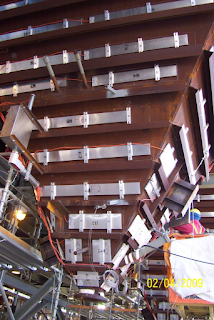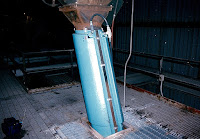 |
| Welding pre-heat is critical to the quality of the weld and and the integrity of the structure. |
When in doubt, review of industry code or a consultation with a welding expert is imperative. Welding code is the first determinant to whether pre-heating is needed. Welding code carefully specifies the minimum preheat temperature, the soak time, and the welding process. Many criteria are considered by welding codes, all gathered from years of rigorously tested data. This data is accumulated from many sources, including metallurgical science, chemical properties of materials, and radiographic analysis.
In its simplest form, weld heat treatment is the process of heating the base metal (parts to be welded) to a desired temperature prior to welding, and then allowing it to cool at a given rate under controlled conditions. The specific temperature to which the part needs to be heated (before welding) is referred to as the “preheat temperature”.
There are several key reasons why it's important to preheat before welding.
- A preheated part cools more slowly, which slows the overall cooling rate of the welded part. This improves the metallurgical (crystalline) structure and makes it less prone to cracking.
- Hydrogen that may be present immediately after a weld is also released more efficiently, which further reduces the possibility cracking. Preheating also mitigates stress from the shrinkage at the weld joint and nearby metal.
- Pre-heating reduces the possibility of fracture during fabrication due to brittleness.
Another less preferred method to heat the target piece is with a torch, or open flame, but this method carries safety concerns as well as controllability issues. Furnaces are also used, but these typically require the transport of the target piece off-site.
Induction heaters offer an attractive alternative for safety, portability and controllability. Induction heating is unique because it uses molecular excitation as its source of heat, as opposed to open flames or external electric elements. Induction heating works very quickly, and since there is no contact with the target piece, there are far less concerns about part contamination. Many industrial processes use induction heating when very high temperatures and uniform control is desired.
Each welding application has it's own unique set of circumstances which dictate the optimal heat treating method. It is always best to contact an expert and solicit their opinion on your best available option.







